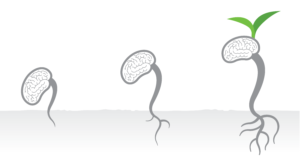For many, perhaps most of us, the end of a year is a time for reflection. Last week I posed some questions to consider while Sitting By The Fire.
This week, as my last story of the year, let’s talk about resolutions. In business, we call it goal-setting, and in our personal lives, we call them “new year’s resolutions.”
Here’s how Webster’s defines each of these:
- Resolution: to make a definite and serious decision to do something.
- Goal: something that you are trying to do or achieve
Resolution sounds much more committed, but common lore is that most of us break our resolutions soon after making them.
Why is that?
Here’s the process most follow for business goals:
- we set goals for the period
- we prioritize the goals and focus on the most important
- we identify the steps we, and our team, need to take
- we identify the dependencies that exist and order the process accordingly
- we establish monitoring systems and milestones so we know how we are progressing toward the goal
In short, for business goals, we have a process, and for those who follow the process, results follow.
In my experience working with business leaders, some follow a similar process for personal goals, and many do not.
For some, a health scare reminds us that life is short and our families depend on us, which leads to getting serious about health and fitness goals, for example.
While most of us require a catalyst to inspire change, I wonder what other, perhaps less severe, motivation we can each find to inspire personal goals or resolutions that are definite and serious and treat them with the same level of importance as our business goals?
Perhaps this is the first resolution to consider for the new year.
Happy Holidays. Thank you for honoring me by reading my Sunday Stories each week. See you in the new year.








 The initial results of my Pivot are excellent. I feel I have much greater clarity regarding the next 3-5 years..
The initial results of my Pivot are excellent. I feel I have much greater clarity regarding the next 3-5 years.. 